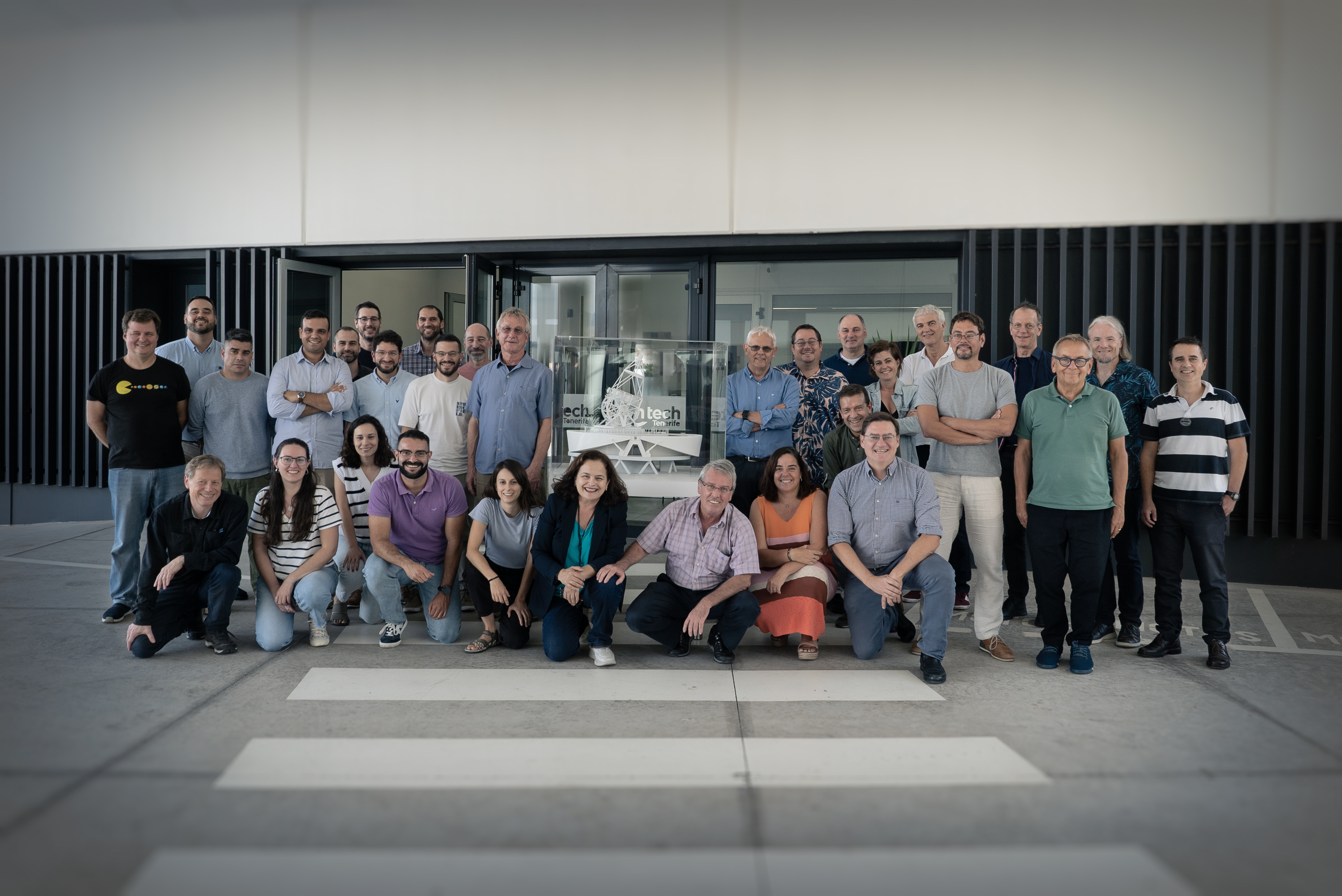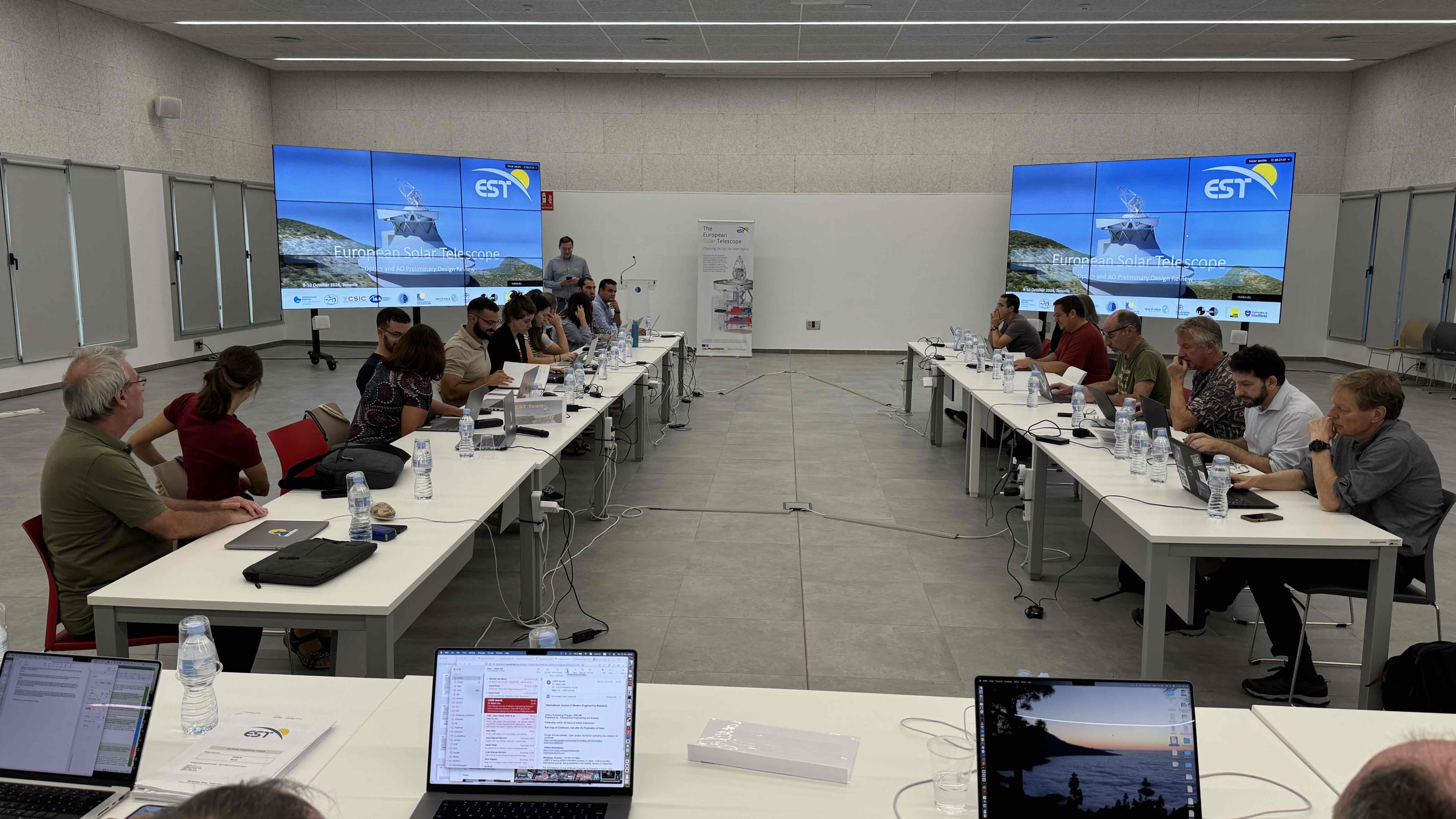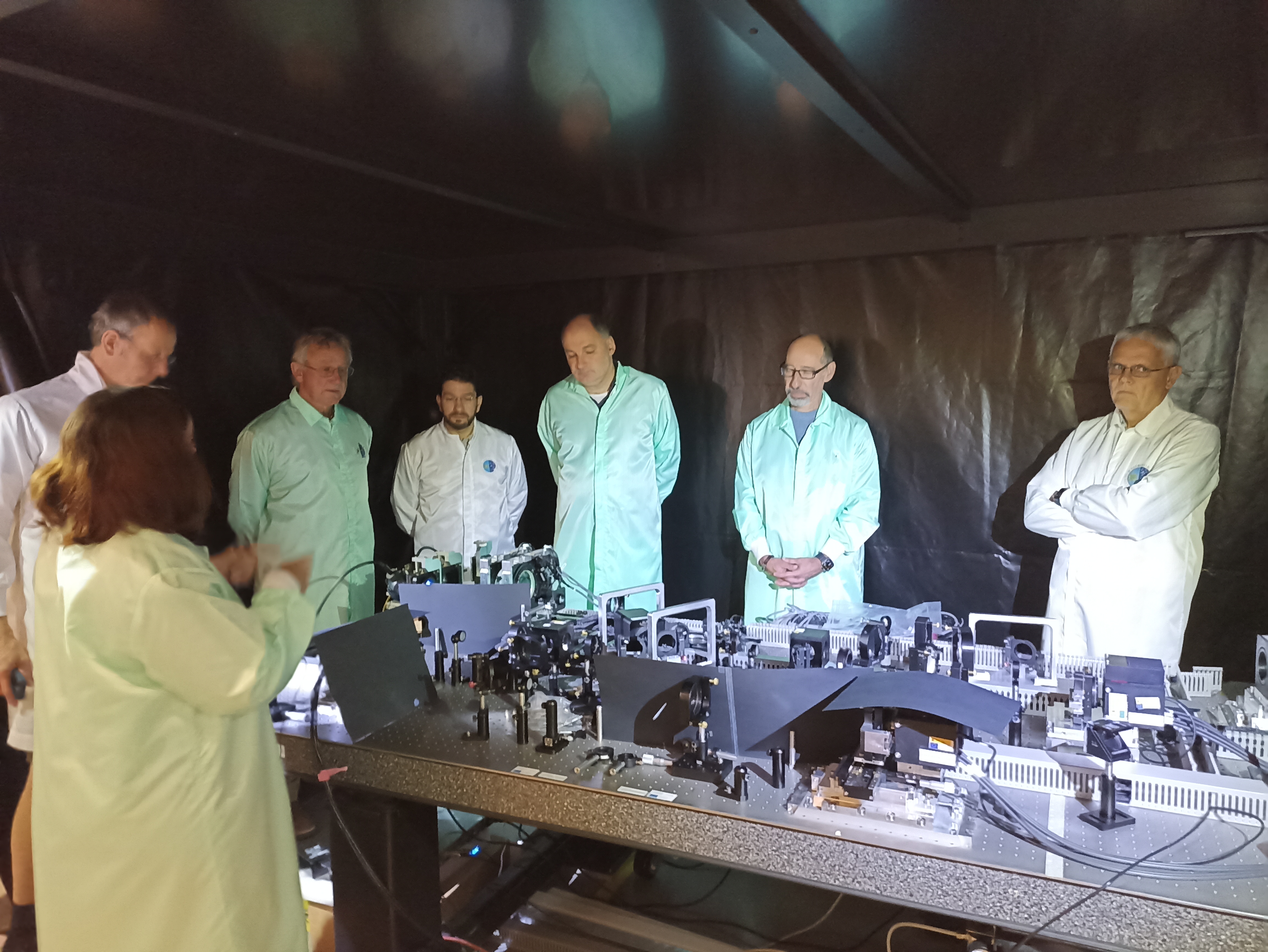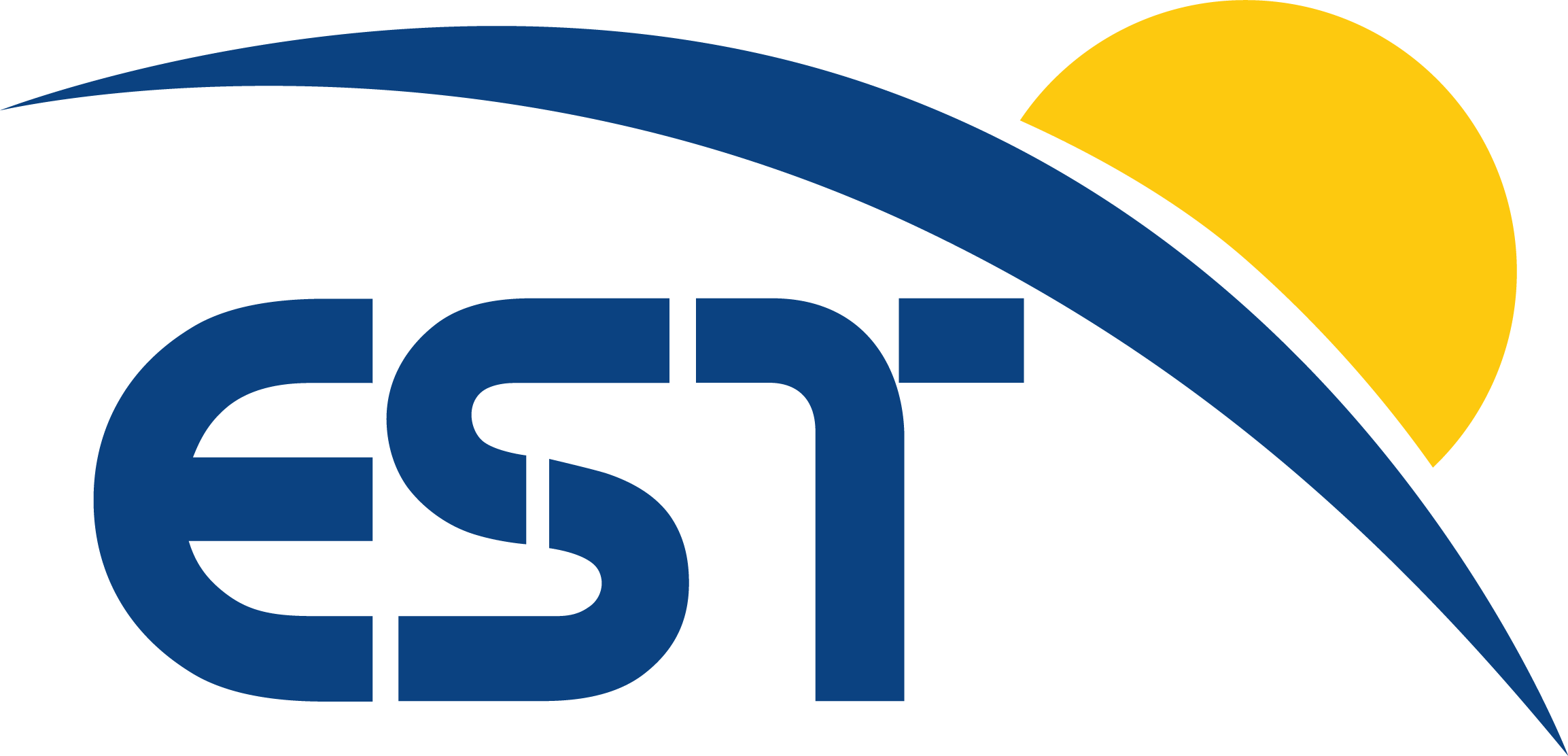EST successfully passed the Optics and Adaptive Optics Preliminary Design Review in October 2024 and is now ready to progress to the System Level Preliminary Design Review.
 Participants in the EST Optics and Adaptive Optics Preliminary Design Review held in La Laguna. Credit: I. Bonet (IAC).
Participants in the EST Optics and Adaptive Optics Preliminary Design Review held in La Laguna. Credit: I. Bonet (IAC).
The EST Optics and Adaptive Optics Preliminary Design Review (OPRD) took place on October 10 and 11, 2024. The EST Project Office (EST-PO) team met with an external review panel composed of international experts in the development of large telescopes and solar instrumentation. The seven reviewers were Predrag Sekuliç (chair; Technology Innovation Institute, United Arab Emirates), Kjetil Dohlen (Laboratoire d'Astrophysique de Marseille, France), Fernando Gago (European Southern Observatory, Germany), David Harrington (National Solar Observatory, USA), Luke Johnson (National Solar Observatory, USA) François Rigaut (Australian National University, Australia), and Thomas Rimmele (National Solar Observatory, USA).
The meeting was also attended by other members of the EST project and representatives of the EST Scientific Instrument Suite, including Luis Bellot (TIS/FBI PI; IAA-CSIC), Thomas Berkefeld (KIS), Valentín Martínez Pillet (IAC), Jorge Sánchez-Capuchino (IAC), Göran Scharmer (EST STAD; SU), Rolf Schlichenmaier (EST SAG chair; KIS), and Michiel van Noort (IFS-M PI; MPS).
As an integral part of the adaptive optics design, the Adaptive Optics Real Time Controller (AORTC) contributed by the University of Durham (UK) and led by Tim Morris was also reviewed. The University of Durham team participated as EST designers and their work was reviewed by the external reviewers.
At the end of the meeting, the review panel declared the revision passed and provided a list of recommendations to improve the EST optics and AO design.
The preliminary design is the continuation of the conceptual design. It was started with a revision of the EST science requirements by the EST Science Advisory Group in 2020. Following a top-down flow, the science requirements were translated into engineering requirements that were used to advance the preliminary design of key telescope systems (M1, M2, structure, dome, pier and heat rejecter) via industrial contracts awarded to external companies through public calls for tenders. In parallel, the EST engineers continued the design of the remaining telescope systems: global optical design, polarimetry, adaptive optics, control software, Transfer Optics and Calibration Assembly (TOCA), Pier Optical Path (POP), Coudé Light Distribution, Coudé sensing assemblies (CSA), civil works, facilities, and interfaces between telescope, instruments and data centre.
As the external companies concluded their work, the corresponding designs were reviewed intensively by the EST-PO and then the subsystems were put together and reviewed globally in the Optics and Adaptive Optics Preliminary Design Review. This time, the EST-PO team was not the reviewer but was reviewed by external experts that have never contributed to the EST design, to ensure a fully independent revision. This OPDR has been the first partial EST PDR. During 2025 there will be revisions of all other aspects of the project, concluding in a System Level PDR.
 Meeting room with tables for the EST-PO team (left), the review panel (right) and observers (behind). Credit: L. Bellot (IAA-CSIC).
Meeting room with tables for the EST-PO team (left), the review panel (right) and observers (behind). Credit: L. Bellot (IAA-CSIC).
The OPDR was started in the first week of September delivering a set of 12 reports to the reviewers and observers, along with the EST optical model, some polarisation scripts and an image stability model. After analysing the documentation and models, the reviewers wrote 281 questions, comments and discrepancies that were answered by EST-PO team members. Of those, 150 were considered clarified and hence definitively closed. Another 80 were closed but required actions to be carried out by the EST-PO, and 51 remained open and needed to be discussed during the meeting in La Laguna. They included topics such as flowing down science requirements to engineering requirements, vibrations in the telescope, adaptive optics, AORTC, active optics, atmosphere statistics, optical performance, optics integration concepts, telescope polarisation, project risks or thermal aspects.
The meeting started with a reception where reviewers, observers and EST-PO members visited the EST Multi-Conjugated Adaptive Optics demonstrator in the IAC laboratories.
 Participants visiting the EST MCAO demonstrator, led by Luzma Montoro (IAC).
Participants visiting the EST MCAO demonstrator, led by Luzma Montoro (IAC).
During the two days of the meeting, questions that required further clarification were discussed, adding more data, plots, CADs or prototypes as needed. Finally, all the questions were closed (147) or closed with actions (134).
There was sufficient time to organise independent splinter meetings about science requirements, polarisation, vibrations, active optics, adaptive optics and recommendations on how to manage the EST construction. At the end of the splinter meetings, the reviewers held a discussion and finally presented their conclusions about the evaluation. They declared that the PDR was passed and recommended a list of actions to improve the EST design, emphasising the competence of the team and the need to enlage the engineering group to cope with the challenges ahead. They highlighted that the optical design is solid and the adaptive optics is sufficiently mature. As usual in these reviews, critical aspects were identified and recommendations to mitigate the problems were issued, including aspects of thermal control and polarisation analysis.
The EST project wants to thank all the participants for their contribution and especially the reviewers for their very valuable and generous contributions.
